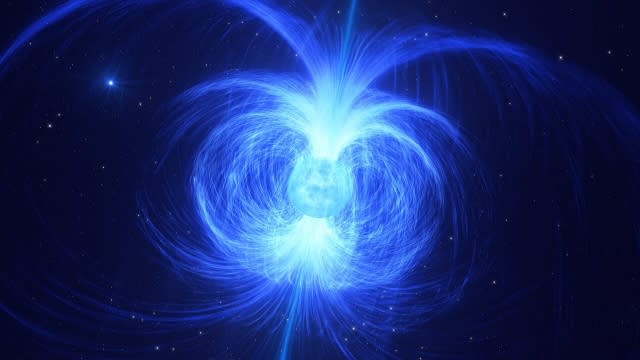Massive star offers new details on the most magnetic objects in space

New details have emerged about some of the most magnetic objects in our universe: Magnetars.
Little is known about how the highly magnetic neutron stars are formed, or where they come from. Some scientists believe a powerfully magnetized core of a parent star plays a key role in how magnetars come to be in our universe.
Now, scientists believe they have unlocked a significant new understanding about how magnetars exist by examining a special helium-rich star that has settled in space about 3,000 light-years from Earth.
SEE MORE: NOAA, NASA agree that July 2023 was the hottest month on record
In details published on Thursday, scientists say while little to nothing is confirmed about the formation of the neutron stars with a powerful magnetic field, they now know more by observing a fiery helium-filled star, which has a spectrum that is dominated by emission lines.
A massive magnetic helium star called HD 45166 was the center of the study. These objects have a magnetic pull that is trillions of times more magnetic than anything a human could create, or anything on Earth.
In the system analyzed for the study, researchers said it contained a type of star along with a mass that contained two solar masses and has a magnetic field of 43 kilogauss, which seems almost incomprehensible to anything any human has ever experienced or witnessed.
Researchers believe that when two lower-mass helium stars merged, the magnetized star was created.
The European Southern Observatory said HD 45166 has the strongest magnetic field "ever found" in a massive star. The magnetic field is so strong that it traps intense winds and particles that blow away from the star's gaseous shell.
While it's not yet a magnetar, researchers believe that is how it will end its life — as a "compact and highly magnetic stellar corpse."
HD 45166 is expected to die by fully collapsing under its own gravitational force, which the ESO says will also strengthen its magnetic field to an unbelievable 100 trillion gauss.
